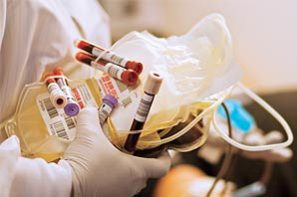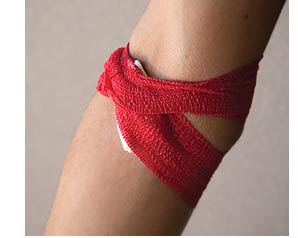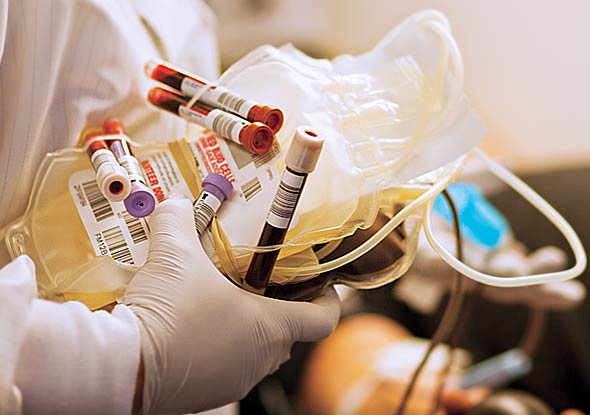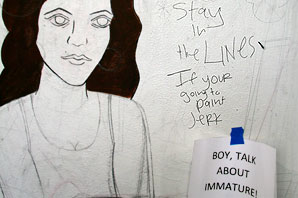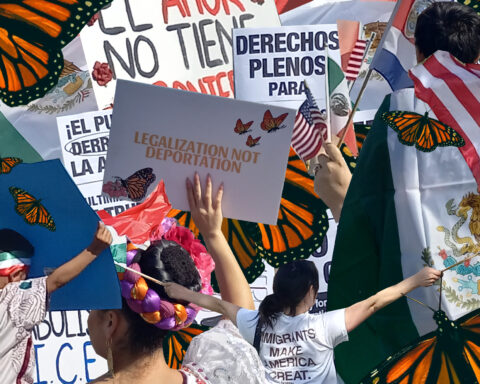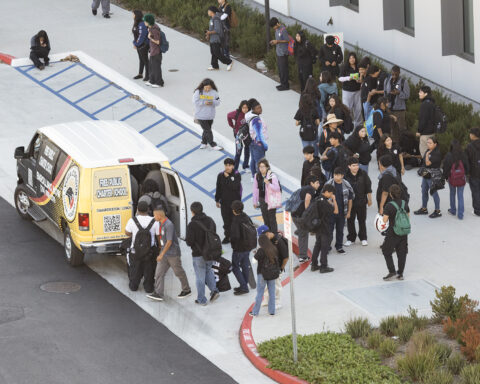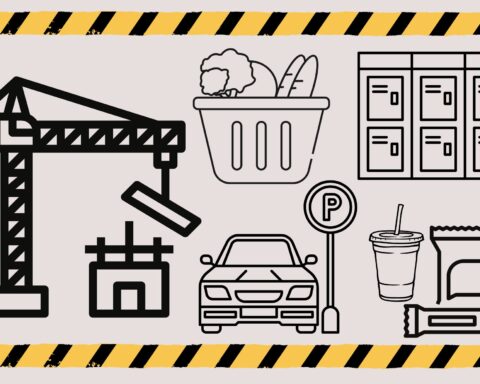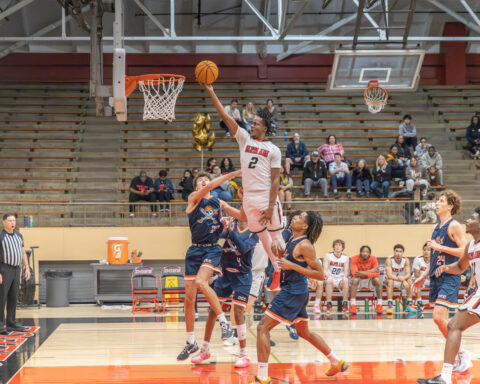Campus blood drive helps ease state’s shrinking reserve.
The Red Cross mobile center’s generator hummed outside Dunlap Hall, while jittery donors waited for their names to be called.
Some knew what to expect while others fidgeted with anticipation. One man looked queasy while most were calm.
They waited, eager to boost California’s meager blood supply.
“I wanted to donate before it closed, so I came straight from class,” said Anais Hernandez, who was waiting outside the white bus with clay residue still on her hands from ceramics class.
The mobile drive was on campus Monday and Tuesday, and one reason was to receive blood donations because Michigan’s Red Cross is on strike, increasing demand in the state.
“We ship blood wherever it is needed,” said Red Cross Nurse Amy Robledo. “Because Michigan is in short supply, we’re shipping donations there.”
Robledo was the nurse calling students into the mobile and prepping them for the screening. Local Red Cross employee Christina Adkins was also there to answer any questions donors had.
“The entire process takes about an hour, and that includes the actual donating, which takes 10 to 15 minutes,” Adkins said.
An average blood donation is a pint, which can save up to three lives. Less than 38 percent of United States citizens eligible to donate actually give blood, Adkins said.
“We get about 30 people a day and get about 24 units of blood,” she added.
A single unit is 450 ml, about the size of one bottle of water.
An average person has five to six liters of blood.
“Only about five percent of eligible donors give blood nationwide, and in California that statistic has dropped down to three percent,” Adkins said.
Surveys conducted by the Red Cross show that Northern California has a three-day blood supply.
That is below the preferred five-day supply.
In the case of a natural disaster, a low supply could be devastating. Two billion people have been affected by natural disasters in recent decades, a number expected to increase according to the Red Cross.
Every day in the U.S., more than 38,000 blood donations are needed.
Most experiences are positive, with quick examinations and minimal pain. In the U.S., 80 percent of the Red Cross blood donations are collected at mobile drives.
“The next time we are here on campus, we want more students to come and donate,” Robledo said.
- Before: he Red Cross mobile unit arrives on campus and signs up eligible donors.
- During: The process takes about an hour, but the actual blood extraction only takes 10 to 15 minutes.
- After: Donors are offered a variety of snacks to help them recover from the loss of about a pint of blood.
RELATED STORY:
- Views (4/23/2012):
Giving a pint of blood could save your life
- The two-party system is failing us. - October 19, 2024
- Read our Fall 2023 Print: Vol. 100 No. 1 - October 23, 2023
- Santa Ana College Awarded State Department of Finance Grant - April 2, 2015


